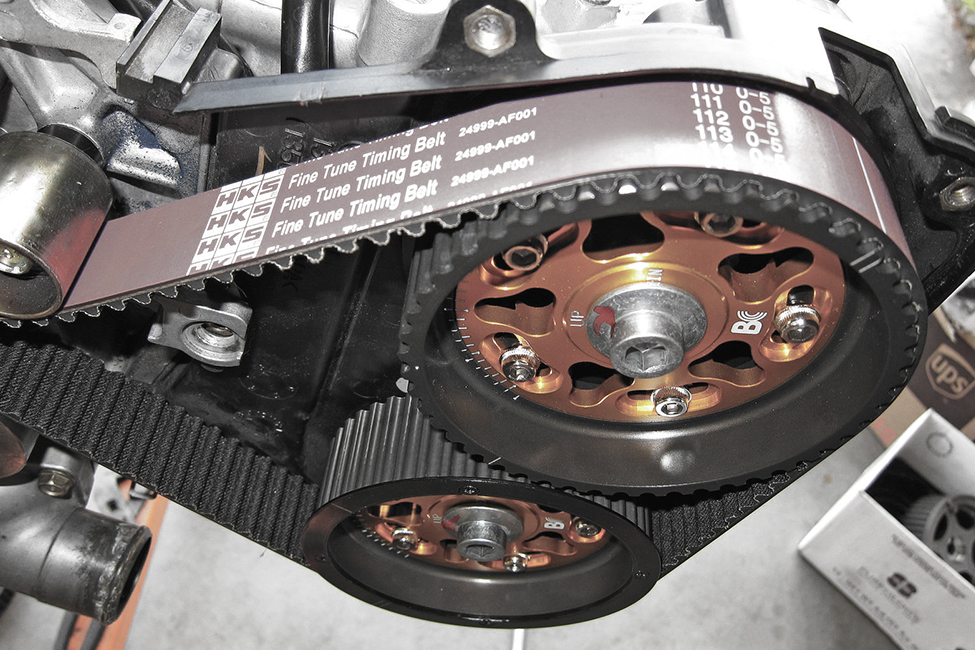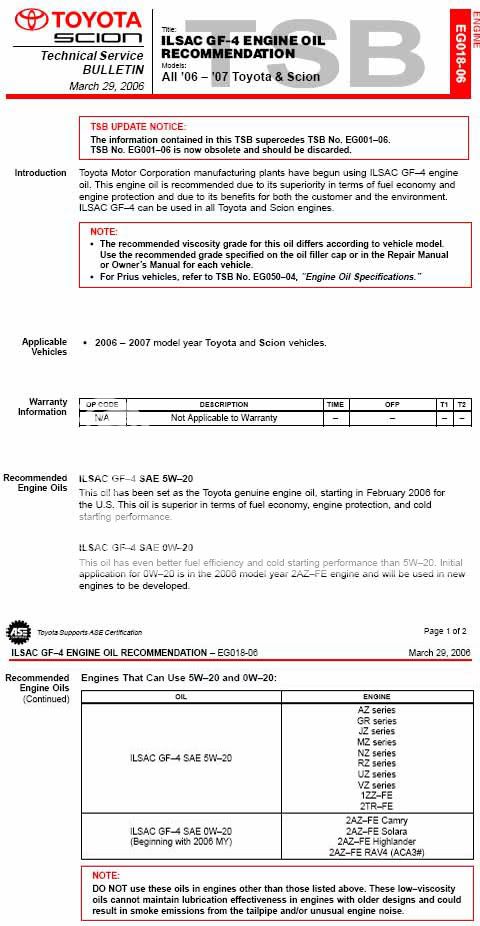Oil chemistry and engine technology have evolved tremendously in recent years, but you'd never know it from the quick-change behavior of American car owners. Driven by an outdated 3,000-mile oil change commandment, they are unnecessarily spending millions of dollars and spilling an ocean of contaminated waste oil.
Although the average car's oil change interval is around 7,800 miles — and as high as 20,000 miles in some cars — this wasteful cycle continues largely because the automotive service industry, while fully aware of the technological advances, continues to preach the 3,000-mile gospel as a way to keep the service bays busy. As a result, even the most cautious owners are dumping their engine oil twice as often as their service manuals recommend.
After interviews with oil experts, mechanics and automakers, one thing is clear: The 3,000-mile oil change is a myth that should be laid to rest. Failing to heed the service interval in your owner's manual wastes oil and money, while compounding the environmental impact of illicit waste-oil dumping.
Scared Into Needless Service
Part of the blame for this over-servicing lies in our insecurities about increasingly complicated engines that are all but inaccessible to the average driver. Pop open the hood of a modern car, and a mass of plastic covers wall off the engine. On some vehicles, the only thing an owner can easily access is the oil cap.
"Vehicles are so sophisticated that oil is one of the last things that customers can have a direct influence over," said Matt Snider, project engineer in GM's Fuels and Lubricants Group. "There's maybe some feeling that they're taking care of their vehicle if they change their oil more often."
The 3,000-mile myth is also promoted by the quick lube industry's "convenient reminder" windshield sticker. It is a surprisingly effective tool that prompts us to continue following a dictate that our fathers (or grandfathers) drummed into our heads: It's your duty to change your oil every 3,000 miles — or your car will pay the price. But as former service advisor David Langness put it, the 3,000-mile oil change is "a marketing tactic that dealers use to get you into the service bay on a regular basis. Unless you go to the drag strip on weekends, you don't need it."
Because busy car owners seldom read their owner's manuals, most have no idea of the actual oil change interval for their cars. And so they blindly follow the windshield reminder sticker, whether it's an accurate indicator of the need for an oil change or not. "I just go by the sticker in the windshield," one well-to-do, educated Denver Lexus owner said. "Otherwise, how would I know when to change it?"
A career Navy mechanic who bought an Edmunds.com long-term car just shrugged when he was told that the vehicle had safely gone 13,000 miles between oil changes. "I'll just keep changing the oil every 5,000 miles," he said. "It's worked well for me in the past."
Our oil change addiction also comes from the erroneous argument that nearly all cars should be serviced under the "severe" schedule found in the owner's manual. In fact, a quiz on the Web site maintained by Jiffy Lube International Inc. (owned by petrochemical giant Shell Oil Company) recommends the severe maintenance schedule for virtually every kind of driving pattern.
The argument that most people drive under severe conditions is losing its footing, however. A number of automakers, including Ford and GM, have contacted Edmunds data editors to request that the maintenance section of Edmunds' site substitute the normal maintenance schedule for the severe schedule that had been displayed.
About the only ones that really need a 3,000-mile oil change are the quick-lube outlets and dealership service departments. In their internal industry communications, they're frank about how oil changes bring in customers. "Many people...know when to have their oil changed but don't pay that much attention to it," said an article in the National Oil and Lube News online newsletter. "Take advantage of that by using a window sticker system [and] customers will be making their way back to you in a few short months."
Another National Oil and Lube News article tied the frequency of oil changes to success in pushing related products and services. For a midsize SUV, the stepped-up oil change intervals will bring in $1,800 over the life of the car, the article says. "A few extra services [or oil changes] can go a long way toward increasing the amount of money a customer will spend during the lifespan we estimated here," the article concludes.
Today's Oil Goes the Distance
While the car-servicing industry is clear about its reasons for believing in the 3,000-mile oil change, customers cling to it only because they're largely unaware of advances in automotive technology. Among 2010 models, the average recommended oil change interval, based on a normal service schedule, is about 7,800 miles — more than double the traditional 3,000-mile interval. The longest oil change interval is 20,000 miles, for all Porsches. The shortest oil change interval is 5,000 miles in some late-model Toyotas, but the carmaker has begun shifting its fleet to 10,000-mile oil change intervals using synthetic oil.
"Oil has changed quite a bit and most of that isn't transparent to the average consuming public," said Robert Sutherland, principal scientist at Pennzoil Passenger Car Engine Lubricants. Synthetic oils, such as the popular Mobil 1, are stretching oil change intervals, leaving the 3,000-mile mark in the dust. "The great majority of new vehicles today have a recommended oil change interval greater than 3,000 miles," said Mobil spokeswoman Kristen A. Hellmer. The company's most advanced synthetic product (Mobil 1 Extended Performance) is guaranteed for 15,000 miles.
Today's longer oil change intervals are due to:
Improved "robustness" of today's oils, with their ability to protect engines from wear and heat and still deliver good fuel economy with low emissions
Tighter tolerances (the gap between metal moving parts) of modern engines
The introduction of oil life monitoring systems, which notify the driver when an oil change is required and are based on the way the car is driven and the conditions it encounters
For 2010 vehicles, 14 of 35 carmakers are now using oil life monitoring systems. One GM car driven by Edmunds went 13,000 miles before the monitoring system indicated the need for an oil change. We sent a sample of that oil to a lab for analysis. The results showed the oil could have safely delivered at least another 2,000 miles of service.
Oil experts and car manufacturers are solidly on the side of the less-frequent oil changes that these formulation changes make possible. "If customers always just stayed with the 3,000-mile recommendation, there'd be these great strides in the robustness of oil that oil companies have made [that] wouldn't be utilized," said GM's Matt Snider. Consumers, he said, would be "throwing away good oil."
Chris Risdon, a product education specialist for Toyota agreed, adding that oil technology advances that permit fewer changes are a tool to protect the environment. "If you're doing it half as much, that's 5 quarts of oil times 1.7 million vehicles a year — that's a tremendous amount of waste oil that's not being circulated into the environment."
Waste oil is a problem exacerbated by too-frequent oil changes, according to the California Integrated Waste Management Board, which has campaigned against the 3,000-mile dictate. The agency says that 153.5 million gallons of used oil is generated in California annually, but only 59 percent of it is recycled.
Our Fit Gets Taken for a Ride
To see what might happen to the average car owner, we took a 2007 Honda Fit to Jiffy Lube for an oil change. The car has an oil life monitoring system, and the system has recommended the past two oil change intervals at 5,500 miles and 7,600 miles on non-synthetic oil. In both cases, an engine oil analysis revealed that the oil could have provided at least another 2,000 miles of service.
On this occasion, we told the Jiffy Lube service advisor we were considering synthetic Mobil 1 because we heard it could extend our oil change intervals. The service advisor said the synthetic oil could enable the Fit to go 4,000 or 5,000 miles before the oil "burned out." The Mobil 1 oil change had a price tag of $92.39. The technician also took the opportunity to upsell us, recommending a cabin air filter for $49.99. The total for our visit, after a $15 coupon, was $132.72.
When the car was returned to us, the sticker in the window called for an oil change in 3,000 miles, not the 4,000 or 5,000 miles the service advisor had promised.
If we were foolish enough to follow Jiffy Lube's 3,000-mile change schedule (which is essentially the advice given by all quick oil change outlets and dealership service departments), the Fit would undergo four unnecessary oil changes per year (assuming 15,000 miles per year of driving), wasting $369 and 15.2 quarts of perfectly good oil. Over five years of the car's life and 60,000 miles of driving, this would amount to $1,847 and 125 quarts of wasted oil. This does not include other "upselling" items at each visit, such as cabin air filters.
Defending the 3,000-Mile Interval
The quick oil change industry justifies its perpetuation of the 3,000-mile standard by saying that most people drive under "severe" conditions. Jiffy Lube's quiz, mentioned earlier in this article, is one example of how that notion is reinforced in drivers' minds. An oil change company representative said the 3,000-mile recommendation is meant to be just that — a recommendation.
Scott Cudini, innovations manager for Jiffy Lube, repeatedly called the 3,000-mile interval a good "fallback position," meant to be a guideline but not a hard-and-fast rule. He added that Jiffy Lube technicians would initiate a "dialogue" with customers about the oil change intervals that apply specifically to their cars.
"In most cases," Cudini said, "even if customers' cars have been plastered with that 3,000-mile sticker, they may have been told by the service advisor that, 'By the way, Sir/Madam, your interval is 5,500 miles.'" Based on our experience at Jiffy Lube and other quick-change outlets, technicians rarely initiate dialogues that could provide accurate information about oil change intervals. In fact, according to a Jiffy Lube spokesperson, the system for supplying technicians with answers only gives them information from a vehicle's severe schedule.
The quick-change industry's deep fallback argument in favor of frequent oil changes is that they are a hedge against trouble. You can't hurt your engine by changing your oil too often, so doesn't that imply that it might actually help it? Well, no.
Steve Mazor, manager of American Automobile Association's Research Center, said that more-frequent-than-necessary oil changes will not "gain any additional life for your engine or any improved fuel economy." He added, "In reality it will make little or no difference to the performance of the vehicle."
The Right Time To Change Your Oil
So where does this leave the car owner who was raised on the perceived wisdom of the 3,000-mile oil change? For a full discussion, your next stop should be our related article, "When Should You Change Your Oil?," which will save you hundreds of dollars over the next few years and fully protect your car and its warranty, while limiting the use of a natural resource.
The short answer, meanwhile, is to consult your service manual or Edmunds' maintenance section to learn your car's actual oil change schedule. If your car has an oil life monitoring system, don't try to second-guess it. Understand how it works and follow its guidelines. To probe more deeply into this subject, consider sending a sample of the oil from your next oil change to a lab such as Blackstone Laboratories, for an inexpensive analysis. Our last suggestion? Rip that sticker off your windshield.





















